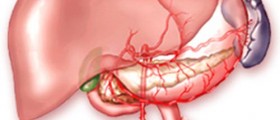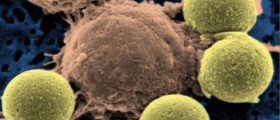
Staging is essential for all malignant tumors. It allows doctors to estimate the progression of the disease and to choose the most suitable treatment option. While staging can be easier in the case of some cancers, it may be quite difficult in people suffering from leukemia. The terminal stage of leukemia is, in short, a phase in which the number of abnormal cells reaches the highest level.
Leukemia: Stages
One of many classifications of leukemia is the classification associated with chronicity of the disease. Leukemia can be acute and chronic. According to the type of abnormal cells, the classification can further be divided into lymphocytic and myelogenous leukemia.
Chronic myelogenous leukemia commonly affects children and goes through three phases — a chronic phase, an accelerated phase, and a blastic phase. The actual phase the patient is currently in is estimated by the percentage of cancerous cells in the blood and bone marrow samples. The final stage of leukemia is the one in which the percentage of abnormal cells exceeds 30%.
Chronic lymphocytic leukemia is divided into four stages.
- In the first stage of chronic lymphocytic leukemia, there is only an increase in the number of lymphocytes and there are no symptoms and signs of the disease.
- The second stage of chronic lymphocytic leukemia is similar to the first one, but patients may develop enlargement of lymph nodes as well as hepatosplenomegaly (enlargement of the liver and spleen).
- The third stage of chronic lymphocytic leukemia leads to anemia, a decrease in the number of platelets, and infiltration of many organs with abnormal leukemia cells.
- And in the final, terminal, stage of this type of leukemia, the number of leukemia cells significantly increases and the number of red blood cells and platelets becomes very low. This is why patients in the terminal stage of chronic lymphocytic leukemia may die from different infections and uncontrollable bleeding.
Leukemia: Terminal Stage
The terminal stage of leukemia is quite complex and causes many different disturbing symptoms and signs. Only in a small number of patients can treatment push the disease into remission. Unfortunately, the rest of the patients have to deal with inevitable outcome of the disease, death.
The terminal stage of leukemia is characterized by various health problems. Patients typically develop severe anemia, cachexia (wasting syndrome, which includes loss of appetite and subsequent loss of weight, muscle atrophy, fatigue and weakness), shortness of breath, slow recovery from different health problems or infections, swelling of the lymph nodes, bruising, swelling and bleeding from gums and other organs in the body.
Some signs that someone with terminal cancer is nearing the end of their life include severe weakness and sleeping most of the time, losing weight and muscle tone at an alarming rate, being less able to communicate, and not having an appetite and finding it hard to swallow even liquids. At this stage, the patient requires palliative care that allows them to be most comfortable in their final days.
Leukemia: Treatment
Treatment for leukemia depends on its type. Acute leukemia requires prompt treatment. With proper treatment and good response, patients may enter remission and stay disease-free for a different period of time.
A variety of treatments for patients suffering from leukemia include radiation therapy, chemotherapy, biological therapy, target therapy and stem cell transplantation. A combination of some of the mentioned is applied in most cases. Stem cell transplantation is highly efficient but is only possible during disease relapse. Therefore, it is not helpful for patients in the terminal stage of the disease.
















Your thoughts on this
Loading...